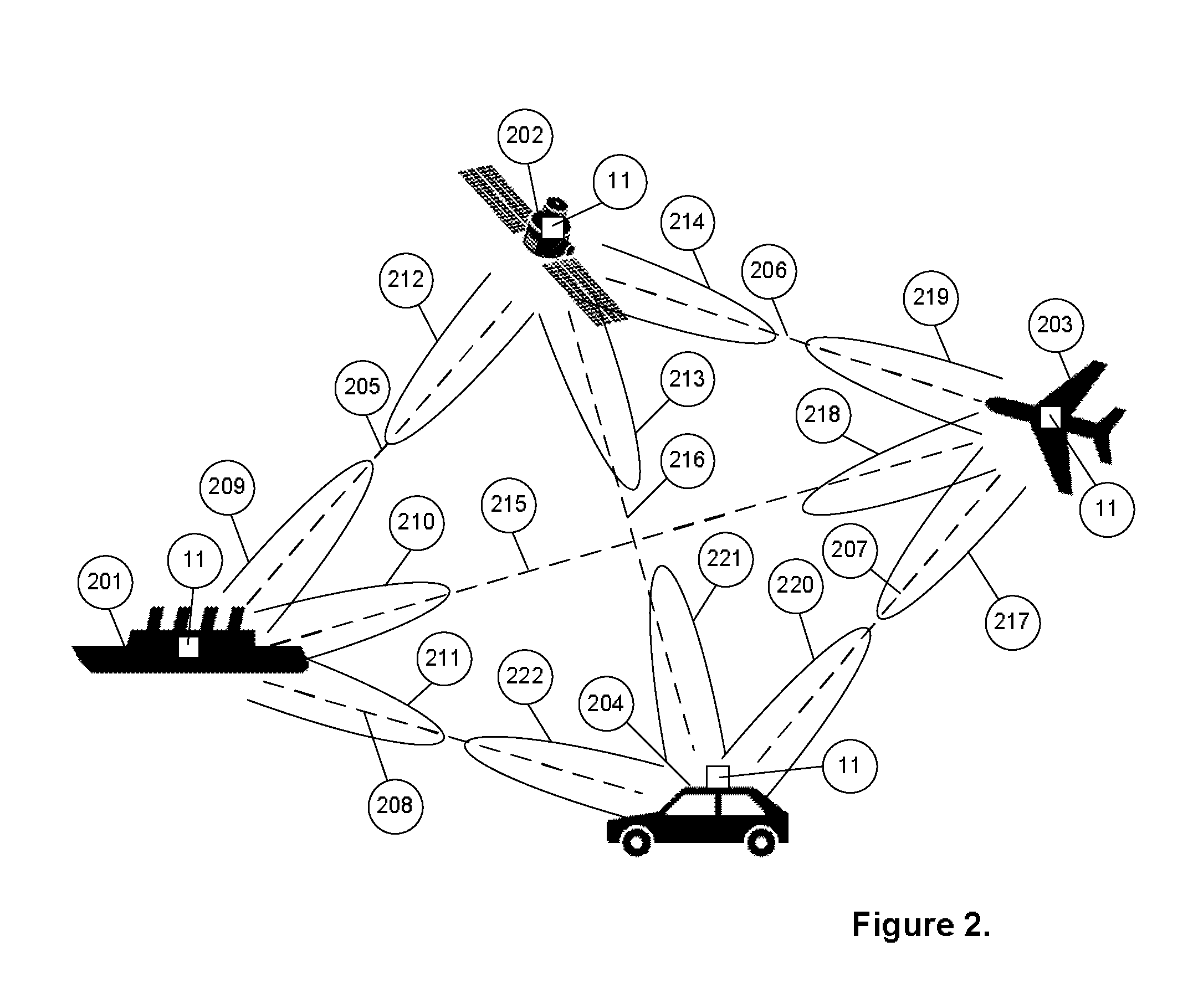Method and system for long-range adaptive mobile beam-forming ad-hoc communication system with integrated positioning
a communication system and adaptive technology, applied in the field of system and method, can solve the problems of limited processing power, limited current consumption and manufacturing cost, limited available space for antenna elements, and reduced efficiency of both mimo techniques and bandwidth efficiency, and satellite systems also suffer from additional atmospheric losses and dispersion effects
- Summary
- Abstract
- Description
- Claims
- Application Information
AI Technical Summary
Benefits of technology
Problems solved by technology
Method used
Image
Examples
Embodiment Construction
[0082]Reference is now made to FIG. 1 which is a block diagram of an embodiment of the disclosed system, implemented as a LAMBACOM unit 11. The Figure illustrates internal modules of an embodiment of the LAMBACOM unit 11 for arrangement to a communication unit. The LAMBACOM unit 11 includes as main elements an array antenna section 12, a positioning system 32, a communication controller 22, a database 31 and a data link 23 to other equipment utilizing positioning data and communication data stream to other communication units.
[0083]The array antenna section 12 includes a plurality of integrated antenna elements 12a-n which are connected to a switching section 13 including a plurality of switching units 13a-n which select whether an integrated calibration network 14 is to be connected to a plurality of RF transceiver units 15a-n of a transceiver section 15.
[0084]It should be mentioned that the calibration network 14 can be excluded in another embodiment of the LAMBACOM unit 11, and t...
PUM
 Login to View More
Login to View More Abstract
Description
Claims
Application Information
 Login to View More
Login to View More - R&D
- Intellectual Property
- Life Sciences
- Materials
- Tech Scout
- Unparalleled Data Quality
- Higher Quality Content
- 60% Fewer Hallucinations
Browse by: Latest US Patents, China's latest patents, Technical Efficacy Thesaurus, Application Domain, Technology Topic, Popular Technical Reports.
© 2025 PatSnap. All rights reserved.Legal|Privacy policy|Modern Slavery Act Transparency Statement|Sitemap|About US| Contact US: help@patsnap.com



